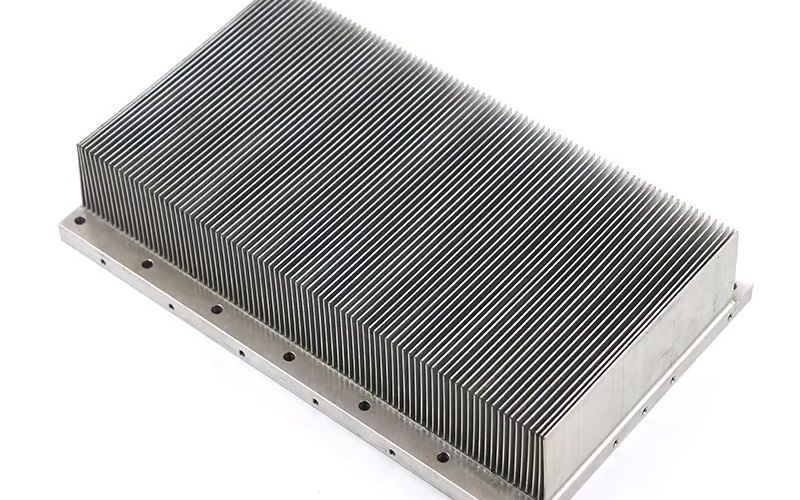Introduction
When it comes to managing heat in electronic devices, heat sinks play a crucial role. There are various types of heat sinks available in the market, with skived and extruded being two popular options. Understanding the differences between these two types can help you make an informed decision for your specific heat dissipation needs.
Skived Heat Sinks
Skived heat sinks are typically made by slicing a piece of metal into thin layers using a special cutting tool. This results in a finned structure that provides a larger surface area for heat dissipation. Skived heat sinks are known for their excellent thermal performance and are often used in applications where efficient cooling is crucial.
Extruded Heat Sinks
Extruded heat sinks, on the other hand, are manufactured by pushing heated aluminum or other metal through a die to create the desired shape. This process allows for the production of heat sinks with complex designs and profiles. Extruded heat sinks are cost-effective and versatile, making them a popular choice for a wide range of applications.
Materials Used
One key difference between skived and extruded heat sinks lies in the materials used. Skived heat sinks are typically made from copper or aluminum, while extruded heat sinks are predominantly made from aluminum. The choice of material can impact the thermal conductivity and overall performance of the heat sink.
Manufacturing Process
The manufacturing process for skived and extruded heat sinks also varies. Skived heat sinks are produced by removing material from a solid block, while extruded heat sinks are formed by forcing metal through a die. This difference in manufacturing methods can result in variations in cost, lead time, and design flexibility.
Thermal Performance
In terms of thermal performance, skived heat sinks are known to offer superior heat dissipation capabilities due to their thin, high-density fins. Extruded heat sinks, while effective, may not provide the same level of cooling efficiency as skived heat sinks. The choice between the two ultimately depends on the specific cooling requirements of the application.
Design Flexibility
When it comes to design flexibility, extruded heat sinks have an edge over skived heat sinks. The extrusion process allows for the creation of custom shapes, profiles, and sizes, making them ideal for applications with unique cooling requirements. Skived heat sinks, while effective, may have limitations in terms of design options.
Cost Considerations
Cost is another factor to consider when choosing between skived and extruded heat sinks. Skived heat sinks tend to be more expensive due to the precision cutting involved in their production process. On the other hand, extruded heat sinks are cost-effective, making them a budget-friendly option for volume production and standard applications.
Applications
Both skived and extruded heat sinks have their own set of advantages and are suitable for different applications. Skived heat sinks are often used in high-performance electronic devices, such as CPUs, GPUs, and power amplifiers, where efficient cooling is critical. Extruded heat sinks are commonly found in consumer electronics, LED lighting, and automotive applications.
Conclusion
In conclusion, the difference between skived and extruded heat sinks lies in their manufacturing process, materials used, thermal performance, design flexibility, and cost considerations. By understanding these distinctions, you can make an informed decision when selecting the right heat sink for your specific cooling needs.
Quote Inquiry
Contact us!

